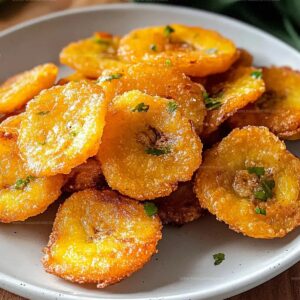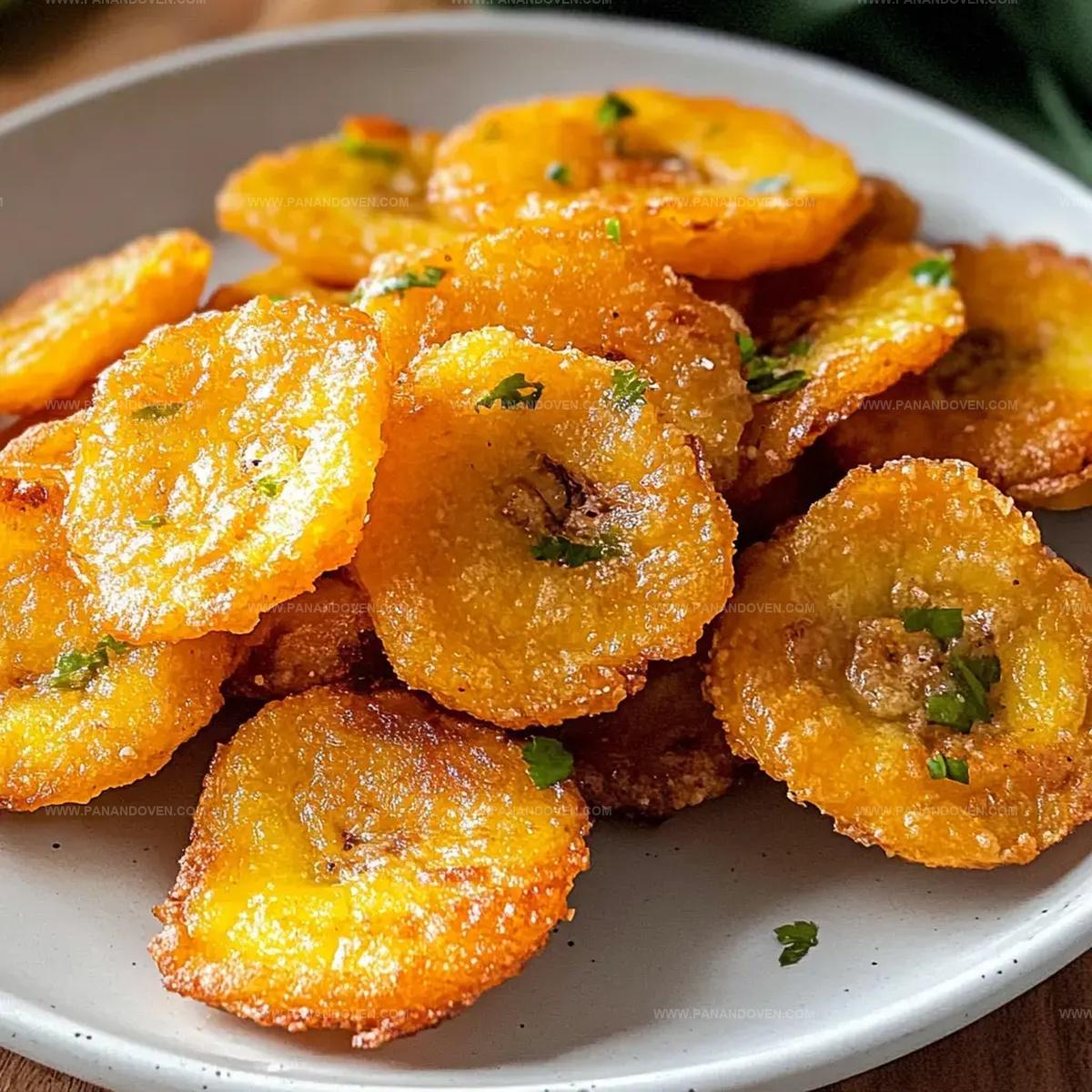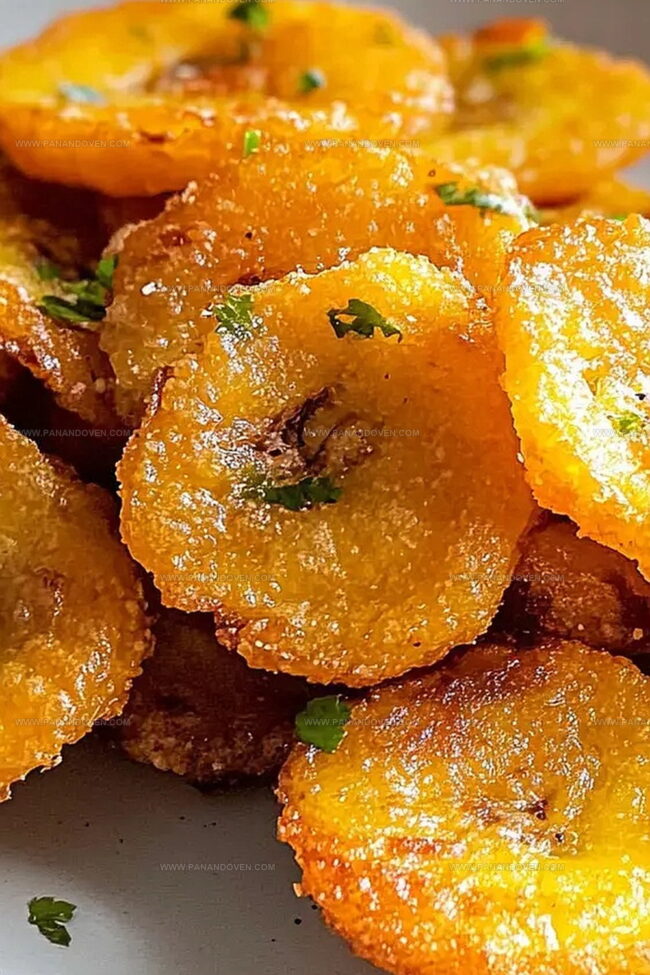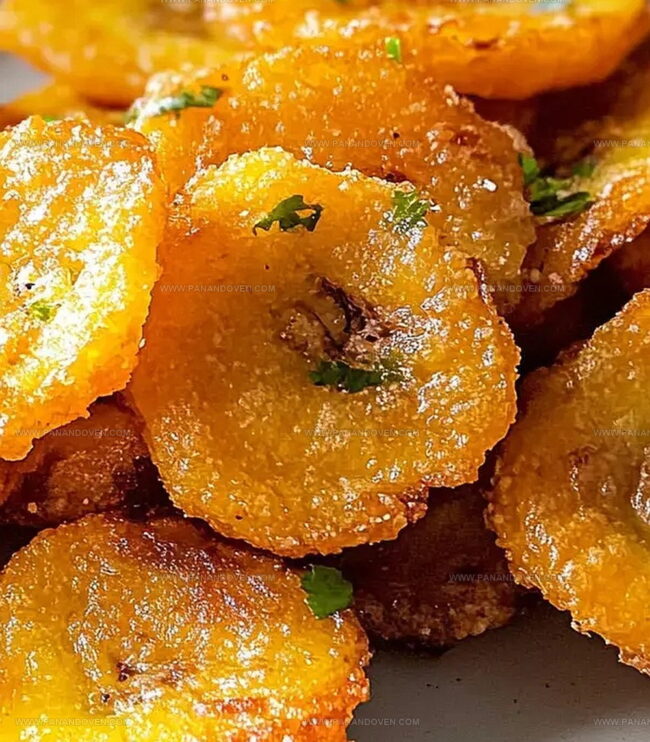The Ultimate Crispy Fried Patacones Recipe for Golden Perfection
Golden, crisp, and utterly irresistible, these fried patacones dance with vibrant Caribbean flavors that transport you straight to tropical coastlines.
Smashing green plantains into delectable fried patacones creates a crispy delicacy beloved across Latin America.
Colombian and Panamanian kitchens have perfected this simple yet mouthwatering technique for generations.
Each plantain transforms from a tough, green fruit into a crunchy, addictive snack with just a few strategic steps.
The magic happens when you flatten, fry, and season these delightful discs to golden perfection.
Served alongside zesty dips or as a standalone treat, patacones promise a crunch that will make your taste buds sing.
Prepare to embark on a culinary journey that celebrates the rich, bold spirit of Latin American street food.
Why Crispy Fried Patacones Are So Addictive
Ingredients for Perfect Patacones
Main Ingredients:Seasoning:Kitchen Tools and Extras:Tools for Crispy Patacones Preparation
Patacones Cooking Instructions
Step 1: Heating the Cooking Oil
Pour vegetable or canola oil into a heavy-bottomed skillet, creating a depth of about one inch.
Set the stove to low-medium heat, allowing the oil to warm gradually and create an ideal frying environment.
Step 2: Preparing Green Plantains
Select firm green plantains with minimal blemishes.
Use a sharp knife to make a lengthwise cut through the skin.
Carefully peel away the thick skin and slice the plantain into uniform chunks approximately one inch thick.
Step 3: Initial Frying Process
Gently place plantain chunks into the heated oil.
Cook each piece for two to three minutes per side, watching for a light golden color to develop.
Use tongs to flip and ensure even cooking.
Transfer fried pieces onto a layer of paper towels to absorb excess oil.
Step 4: Flattening the Plantain Pieces
Take each partially cooked plantain piece and press it flat.
If you have a tostonera, use it to create uniform thickness.
Without a tostonera, use a flat-bottomed glass or small cutting board to gently smash each piece into a thin disk.
Step 5: Final Crispy Frying
Increase the stovetop heat to medium.
Carefully place the flattened plantain disks back into the hot oil.
Fry for one to two minutes on each side, rotating until they turn a deep golden brown and become wonderfully crispy.
Step 6: Serving the Patacones
Remove the patacones from the oil and place them on fresh paper towels to drain any remaining oil.
Sprinkle with fine sea salt while still hot.
Serve immediately as a delightful side dish or appetizer.
Tips for Golden Fried Patacones Every Time
Patacones Toppings and Sauces to Try
How to Serve Patacones as a Snack
Patacones Storage for Crunchiness
FAQs
Patacones (also known as tostones) are twice-fried green plantain slices popular in Latin American cuisine, typically served as a crispy side dish or snack.
Green plantains are firmer and less sweet, making them perfect for achieving a crispy texture and neutral flavor that works well as a savory side dish.
Yes, you can use a flat-bottomed bowl, the bottom of a glass, or a heavy spatula to flatten the partially fried plantain pieces.
Look for a light golden color during the first fry and a crispy, golden-brown exterior during the second fry. The edges should be slightly darker and the texture should be crunchy.
Print
Crispy Fried Patacones Recipe
- Total Time: 25 minutes
- Yield: 4 1x
Description
Salvadoran patacones highlight green plantains smashed and twice-fried to crispy perfection. Golden brown discs deliver authentic Central American street snack satisfaction you cannot resist.
Ingredients
Plantains and Oil:
- 2 green plantains
- 12–20 ounces (340–567 grams) avocado oil
Seasoning:
- 1 pinch sea salt
Instructions
- Prepare the frying oil by pouring it into a pan, creating a depth of approximately one inch. Gently heat the oil on low to medium temperature.
- Carefully slice the plantain skin lengthwise, remove the peel, and cut the fruit into uniform one-inch chunks.
- Submerge the plantain pieces in the warm oil, cooking for 2-3 minutes on each side until they develop a light golden hue. Remove and let excess oil drain on absorbent paper towels.
- Using a tostonera or a flat-bottomed bowl, firmly press and flatten each fried plantain chunk to create thin, wide discs.
- Elevate the oil temperature to medium heat, then carefully return the flattened plantain discs to the pan. Fry for 1-2 minutes per side, ensuring they transform into crispy, golden-brown patacones.
- Transfer the patacones to fresh paper towels to eliminate any remaining oil. Sprinkle generously with sea salt and serve immediately while hot and crunchy.
Notes
- Choose green, firm plantains for the best texture and crunchiness.
- Use a tostonera or heavy glass to flatten evenly, ensuring uniform thickness for consistent crispiness.
- Keep oil temperature consistent between 350-375°F to prevent soggy or burnt patacones.
- Salt immediately after second fry to help seasoning adhere and enhance flavor profile.
- Prep Time: 10 minutes
- Cook Time: 15 minutes
- Category: Appetizer, Snacks
- Method: Frying
- Cuisine: Latin American
Nutrition
- Serving Size: 4
- Calories: 300
- Sugar: 0 g
- Sodium: 50 mg
- Fat: 20 g
- Saturated Fat: 2 g
- Unsaturated Fat: 18 g
- Trans Fat: 0 g
- Carbohydrates: 40 g
- Fiber: 6 g
- Protein: 3 g
- Cholesterol: 0 mg




Marcus Reed
Founder & Food Content Creator
Expertise
Single-recipe development, Seasonal and local ingredient utilization, Food photography and styling, Culinary writing and content creation
Education
Culinary Arts Certificate, Blue Ridge Community and Technical College, WV
Focus: Fundamentals of culinary techniques, emphasizing hands-on experience in small-scale kitchen settings.
Marcus’s story begins in Asheville, where good food and family kitchens shaped his earliest memories. After hands-on culinary training and a lot of trial (and a little error), he realized that real cooking isn’t about perfection, it’s about connection.
At Pan and Oven, Marcus crafts recipes that are easy to follow, packed with flavor, and built for real kitchens.